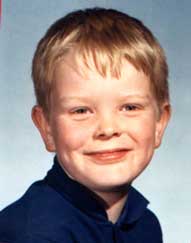Wireless 2.0
Unfortunately I could only attend the second half of this one-day conference. I missed the keynote from Joe McGeehan and the presentations from Vodafone, Icera and Picochip. Although these were all reported to be very interesting sessions, I was pleased to have caught the presentations by Anders Carlius (TerraNet), Will Franks (Ubiquisys)and Stuart Scott (Intohand).
Anders Carlius described a peer-to-peer mesh communications network that TerraNet have deployed in Ecuador and Kenya. He labelled this as “communications for the last 4 billion” - developing nations where the users may be 60km from roads, power etc. The system makes money from incoming calls (from emigrants to the city calling home). Calls have a 90s maximum duration and the noise level increases as the call continues past 30s!
The TerraNet phone has a three button interfere. The concept of “identity” is built in. To make a call you scroll through your contacts and press “call”. To add a new contact you hold two phones together ("kissing"). This all sounded very carefully thought through to minimise customer care costs.
Will Franks is Founder and CTO of Ubiquisys. Ubiquisys was founded in 2004 and is now a market leader in Femtocells. Google have recently become a significant investor in Uniquisys.
So, what is a femtocell? A 3G network in box. No buttons. Idiot proof. Uses an existing broadband connection as backhaul – good value for operator – no backhaul or power cost. Offers 7Mbit/s in the home to 3G handsets. This can drive 3G phone sales – at last a reason to acquire a 3G phone. Content (audio, video, data) can be transferred to the phone at home and used away from home when (3G) network connectivity may be poor. “Sync at home; consume at will”. Radiated power is very low power in the home – 1 mW – gives very long battery life, decreases heath risks. Voice quality is very good, video performance is excellent.
Everyone I spoke to after Will's presentation wanted to buy a femtocell. But it was a very geeky audience.
Stuart Scott gave the final talk. Intohand are a software house working in the wireless space. Stuart described how grotty things are at the moment, close platforms, poor platforms (Intohand can crash some handsets from their Java sandbox). Stuart made an appeal for downloadable software, to make phones more like PCs. He said we need to have a sequence of connectivity; content creation tools – content will follow; services and mashups - service revenue will follow.
Finally, he made the observation that "The Web" will become "The Mobile Web"; most web access will be from phones.
So, overall an interesting conference. There were a mix of people there, mainstream technology, start-ups and start-ups, entrepreneurs and wanabees, VCs etc. Well done Silicon South West for putting it on.





No comments:
Post a Comment